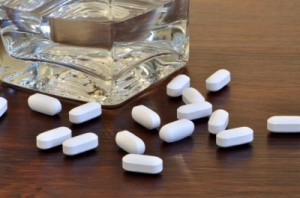A Guide to Painkiller Detox
 A recent study suggests that prescription painkiller use within the United States is finally leveling off, with 241 million prescriptions written in 2012, compared to 243 million in 2011. This is good news, as it might mean there will be fewer people addicted to these drugs in the future. But that news might come too late for those people who are already addicted. For them, real healing can only come when they enroll in a painkiller detoxification program. Here, they’ll have the opportunity to cleanse their bodies of the drugs they are addicted to, and this work will prepare them to participate fully in a drug rehab program, where they’ll learn to preserve their sobriety for the rest of life.
A recent study suggests that prescription painkiller use within the United States is finally leveling off, with 241 million prescriptions written in 2012, compared to 243 million in 2011. This is good news, as it might mean there will be fewer people addicted to these drugs in the future. But that news might come too late for those people who are already addicted. For them, real healing can only come when they enroll in a painkiller detoxification program. Here, they’ll have the opportunity to cleanse their bodies of the drugs they are addicted to, and this work will prepare them to participate fully in a drug rehab program, where they’ll learn to preserve their sobriety for the rest of life.
Chemical Issues
Painkiller pills come under many different names, such as:
All the ingredient lists are just a little bit different, and even the dosages of these pills are a little different. Even so, all these pills contain a narcotic element that can distract the mind from signals of pain. This same ingredient can also cause the brain to release chemicals it would normally release during a pleasurable event. It’s this surge of chemicals that can make painkillers so very addictive. The brain adjusts to the surge, creating a smaller response each time the drug is introduced, and in time, the brain is amended in such a way that it can only function properly in the presence of drugs. When those drugs are gone, the body can rebel and misery can set in. The chemical amendments are to blame, and they can be hard to ignore.
Withdrawal Symptoms
 When the amended cells don’t have access to the painkillers they crave, they malfunction and rebel, producing symptoms that are quite similar to those experienced by people with the flu. People may feel nauseated and sick, and they may have diarrhea and vomiting. Sweating skin, sore muscles and watering eyes are common. Some people even develop goose bumps and runny noses. The U.S. National Library reports that the symptoms typically begin within 12 hours of the last hit of drugs, and they’re typically not considered life-threatening. However, some people find them so troubling that they return to drugs.
When the amended cells don’t have access to the painkillers they crave, they malfunction and rebel, producing symptoms that are quite similar to those experienced by people with the flu. People may feel nauseated and sick, and they may have diarrhea and vomiting. Sweating skin, sore muscles and watering eyes are common. Some people even develop goose bumps and runny noses. The U.S. National Library reports that the symptoms typically begin within 12 hours of the last hit of drugs, and they’re typically not considered life-threatening. However, some people find them so troubling that they return to drugs.
In a study in the British Journal of Psychiatry, researchers found that only 24 percent of people who went through withdrawal on their own completed the process. The rest went right back to drugs, and they might not ever try to stop taking drugs again. The physical discomfort they feel, along with the significant cravings for drugs that rack their bodies, make drug use just too appealing to ignore, and they might go right back to drugs as a result. A formal detox program is designed to soothe those symptoms, so people can get sober without being so tempted to fall back into drug use.
Typical Treatments
 There are a variety of medications that work on the same receptors used by painkiller drugs, and by using these medications, people can train their bodies to function without the presence of drugs. If medications are used, medical professionals provide high doses at the beginning of the detox process, matching the rate of drugs the person once took. Slowly, the amount of drugs provided is reduced, until the person isn’t taking any drugs at all. Some people taper quickly, as their bodies are able to adjust with ease. Other people may take these replacement medications for long periods of time, as their discomfort returns when they attempt to stop the use. People like this may achieve a maintenance dose of medications, and when they do, their detox program may be considered complete.
There are a variety of medications that work on the same receptors used by painkiller drugs, and by using these medications, people can train their bodies to function without the presence of drugs. If medications are used, medical professionals provide high doses at the beginning of the detox process, matching the rate of drugs the person once took. Slowly, the amount of drugs provided is reduced, until the person isn’t taking any drugs at all. Some people taper quickly, as their bodies are able to adjust with ease. Other people may take these replacement medications for long periods of time, as their discomfort returns when they attempt to stop the use. People like this may achieve a maintenance dose of medications, and when they do, their detox program may be considered complete.
Replacement medications like methadone and buprenorphine may work on the same receptors as prescription painkillers, but they don’t produce the same kind of effects. People who take these medications often don’t feel euphoric or sedated, for example. They just feel normal. It’s the proper medication for a chemically amended brain, and it can be an incredibly helpful detox tool. By providing treatment, medical professionals are allowing their clients to feel calm and at ease, instead of sick and unhappy, and this could help them to stay in treatment.
While medications can be helpful in detox, not all people need these treatments. In fact, according to a study in the journal Current Opinion in Psychiatry, medications alone can’t really account for success in detox. People who do well in programs like this also have access to other therapies as they work through their adjustment.
Some programs provide a soothing environment, including:
- Dark rooms
- Bland foods
- Quiet music
- Cool baths
- Warm showers
Others provide frequent talk-therapy sessions, allowing people to discuss their symptoms and their concerns about the future. Still others allow people to detox at home, but they provide detailed instructions families should follow in order to transform their homes into a healing oasis during detox. All of these steps may seem superfluous, but they can be helpful for people who are trying to heal.
The Next Step
Detox isn’t considered a cure for a painkiller addiction, as a study in the Journal of the Royal Society of Medicine suggests that people who go through detox alone tend to relapse to opiate drugs in time. Here, researchers found that 71 percent of people who completed an inpatient detox program went back to drugs. It’s depressing, but it’s common, and people who work in detox facilities know this all too well. That’s why they work so hard to ensure that their clients enroll in formal rehab programs, just as soon as their detox programs are complete.
When detox programs begin to wind down to a close, therapists begin to prompt clients to enter their rehab programs. They may encourage clients to attend a few therapy sessions, for example, or they may provide paperwork clients can fill out in order to enroll in a rehab program. They may also provide clients with written documentation they can read about how rehab works and why it might be so important. This work can encourage clients to enroll and work hard in their rehab programs, as it’s an important part of their healing process.
If you’re ready to fight back against an addiction to prescription painkillers, we’d like to help. At The Orchid, a Florida rehab facility just for women, we provide detox and rehab programs for painkiller addictions, and we can develop a customized program based on your medical history, personal preferences and deep-seated needs. We provide compassionate, group-based care that’s just right for women in need, no matter what they might be addicted to. Please call us to find out more, and to get the process started.
